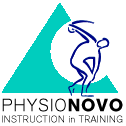Course topics
- PhysioNovo explains the causes of cervical, thoracic, and lumbar back pain from a scientifically based motor perspective and includes the motor functions of the hip and shoulder joints.
- It is an up-to-date theoretical and scientific reorientation of the theoretical framework as a background for the explanation of non-specific back pain and provides purely scientific knowledge regarding
o the biomechanical properties of the spine - the double S-shape - of the individual
segments;
o the (patho-)physiology of the hip and shoulder joints;
o the (patho-)physiology of the peripheral nervous tissue;
o the articular neurology - arthromyogenic control;
o the clinical and radiological diagnosis;
o the regional interdependence between the motor function of the arms, legs, and spine
(shoulder-spine and hip-spine syndrome);
o of trunk motor function - postural school as a complex motor learning process - typical
paradoxical motor function of the abdominal muscles in relation to the motor function of
the hip, pelvic floor, and shoulder joints;
o the principle and significance of a force couple on an articular-motor and functional level
- its methodical application in sport, rehabilitation, and prevention.
o of a correct walking, running, and jumping technique and its importance for the correct
loading of the sacroiliac, lumbosacral, and lower lumbar vertebral joints.
- Based on the insights provided into the scientifically sound (patho-)physiology of the tissues of the musculoskeletal system, PhysioNovo provides answers:
o How to distinguish radicular from articular symptoms?
o How do I recognize sensory and motor symptoms of (also mild) shoulder and hip joint dysfunctions and their consequences for the spine?
o How do dysfunctions and pathologies of the peripheral nervous and fascial systems
manifest themselves?
o How can dysfunctions of the shoulder joint trigger neck and thoracic back pain?
o How does scapular dyskinesia relate to dysfunctions of the spine and shoulder joint?
o What influence do hip joint dysfunctions have on the pain sensitivity of the sacroiliac and
lumbosacral joints?
o How is a hip joint function related to pelvic kinesia and motor function of the lumbar
spine?
o What is the relationship between hip joint function, pelvic kinesia, and pelvic floor
function?
o What are the consequences of arthromyogenic inhibition for the local and global motor
control?
o What influence do joint dysfunctions have on local and global (vertebral) control?
- PhysioNovo offers the acquisition of practical skills for motor diagnostics and therapy:
o How do I treat deep lumbar back pain even if hip joint dysfunction has been identified at
the same time?
o How do I treat cervical and thoracic back pain even if shoulder joint dysfunction is also
detected?
o How do I diagnose scapular dyskinesia? And pelvic dyskinesia? And how do I treat them?
o On the basis of which parameters do I assess the gait, walking, or hopping pattern?
o How can I change the gait, walking, or hopping pattern (also in sports) taking into
account the basics of motor learning?
o How do I carry out strength training (with/without equipment) that is appropriate for the
joints, using the principle of force couple? What role do the different directions of
movement play?
o How do I apply the concept in early post-traumatic and post-operative rehabilitation?
And in patients with back pain during and after pregnancy? And in patients with
scoliosis?
o Interactive character: application of the concept to the exercise material contributed by
the participants.
o Over 50 videos illustrate the practical content of the concept.
- After completing the course, the participants have theoretical knowledge and practical action to plausibly explain and effectively counter non-specific back pain. They are able to apply a very specific movement therapy in treatment, which focuses on the different biomechanical properties of the different directions of movement of the hip and shoulder in combination with a targeted postural correction of the spine.
© Paul Geraedts, April 2023.






